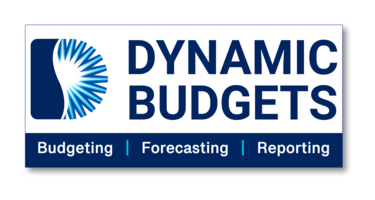Why October Is the Perfect Forecasting Month
Don’t Get Spooked by Budgeting: Why October Is the Time to Forecast
The leaves are turning, the pumpkins are out, and Halloween is just around the corner. Ghosts, goblins, and haunted houses may be make-believe, but there’s one thing that truly keeps finance teams up at night: budget season.
For many organizations, budgeting feels like the scariest part of the year. Spreadsheets balloon out of control, formulas break, and the entire process drags on for months. By the time the final version is approved, the year is nearly over—and no one dares touch it again until next fall.
But here’s the truth: if you’re only budgeting once a year, you’re haunting your own decision-making. October isn’t just about costumes and candy; it’s the perfect time to face your fears and start forecasting.
The Monsters Lurking in Annual Budgets
Every finance professional knows the story. You labor for weeks (or months) to produce a detailed budget. You finally lock it down, breathe a sigh of relief… and then reality shows up.
- A client delays a contract.
- A supplier raises prices.
- A new hire costs more than planned.
- A project is scrapped halfway through.
Suddenly, your “carefully crafted” budget looks more like a haunted house: filled with hidden surprises, creaky foundations, and the occasional jump scare.
That’s why clinging to a once-a-year budget is so frightening. It doesn’t reflect the business you’re actually running. By October, your January assumptions are often as outdated as last year’s costume.
Why October Is the Perfect Forecasting Month
Think about it: October is the unofficial start of year-end planning. With only three months left, leaders want to know two things:
- How will we finish this year?
- What do next year’s numbers really look like?
This is where forecasting becomes your secret weapon. By reforecasting now, you:
- Give executives a realistic view of year-end results.
- Spot where you’re ahead, behind, or off track.
- Enter budget season with fresher, more accurate assumptions.
Instead of waiting for January to surprise you, forecasting in October gives you a head start—and a competitive advantage.
Don’t Fear the Variances
Variances between budget and actuals can look scary in red ink, but they’re not villains. They’re clues. Each variance tells a story:
- Was it timing-related?
- Was it a one-off event?
- Is it an ongoing shift in the business?
The “bad” approach is to ignore or bury these numbers. The “good” approach is to diagnose them. The “best” approach? Use them as the starting point for a forecast.
Forecasting turns spooky variances into actionable insights. Instead of asking, “Why are we off?” you start asking, “What should we do next?”

Reforecasting: A Treat, Not a Trick
Here’s what effective forecasting looks like:
- Copy your detailed budget into a reforecast model.
- Update line items with what you now know (new hires, vendor changes, project delays).
- Annotate your changes so next year’s planning team learns from them.
- Share updated projections with leadership—before they ask.
The payoff is huge. When January rolls around, you’re not starting from scratch. You already have a “live” budget that reflects the real business. Budgeting next year suddenly becomes less of a nightmare.
The Real Horror Story: Excel
For many teams, the biggest villain is the tool itself. Spreadsheets multiply like zombies, formulas break in the night, and version control becomes a horror show.
That’s why organizations often resist reforecasting. The thought of revisiting the spreadsheet graveyard mid-year is terrifying.
But here’s the good news: budgeting software makes the process painless. With Dynamic Budgets, creating a reforecast is just a few clicks. Instead of wrangling cells and tabs, you can focus on analysis and strategy.
Think of it like trading a rusty lantern for a floodlight—you see clearly, move faster, and avoid nasty surprises.
A Halloween Challenge for Finance Leaders
So here’s the challenge: before Halloween, carve out time to reforecast. Treat it like your team’s financial pumpkin carving contest.
🎃 Ask: How will this year really end?
👻Spot: Which variances are ghosts (timing), goblins (one-offs), or real monsters (structural shifts)?
🕸️Act: Adjust your plan and enter year-end with clarity instead of fear.
Your future self—and your leadership team—will thank you.
Wrapping It Up
Budget season doesn’t have to be a horror story. By October, you already know where the original plan went wrong. Use that knowledge to forecast, and you’ll turn a scary, once-a-year ordeal into a manageable, ongoing process.
So don’t get spooked by budgeting. The real fright is waiting until January to face the truth. Forecast now, and you’ll head into the new year with confidence instead of cobwebs.
Ready to banish the budgeting monsters?
With Dynamic Budgets, reforecasting isn’t a nightmare—it’s a treat. Contact us and see how easy forecasting can be.